Differences Between Henbit and Purple Dead Nettle
Learn how to tell the difference between henbit and purple dead nettle, plus tips for using and eating these early spring weeds!
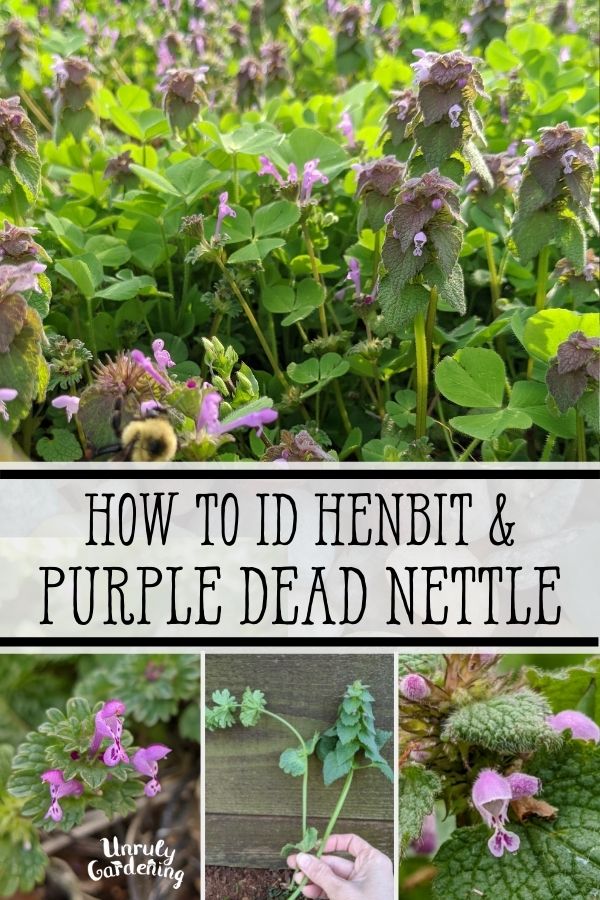
Where to Find
Henbit (Lamium amplexicaule) and purple dead nettle (Lamium purpureum) are two commonly confused weeds whose flowers appear around March, or early spring. You can easily go foraging for them in your garden beds or cold frames, or find them tucked along protected sections of your house’s foundation.
Both Henbit and Purple Dead Nettle are native to Europe, Asia, and Northern Africa, but are now widespread in North America. Some people consider them a pesky weed in their lawn or garden, and the truth is that they can play intermediary host to a few baddies (including tomato spotted wilt virus), but on the plus side – they’re great early food sources for bumble bees and other native bees and pollinators. (And we humans can eat and use them too!)
Here’s a photo of henbit and purple dead nettle growing side by side in our garden, mixed in with a cover crop of clover:

Lookalikes
Henbit has no poisonous lookalikes. As far as purple dead nettle: as long as it’s flowering (so you can positively ID the tiny flowers), it has no toxic lookalike. The young plant with just the leaves alone can sometimes be confused with very young foxglove, which is toxic, but once it blooms, you can easily tell the difference between the two.

A few people confuse henbit with Creeping Charlie (Glechoma hederacea), also called Ground Ivy. Here’s a photo of Creeping Charlie below. The leaves are kidney shaped and attached to the stem with petioles (little stems) – unlike henbit leaves which are attached tightly to the stem. Creeping Charlie blooms a little later in the spring, and and you can see that the colors and shape of the flowers are different.
For more photos and info about Creeping Charlie, check out our article:
Foraging & Using Creeping Charlie (Ground Ivy)
Sometimes stinging nettle and purple dead nettle get mixed up, because they sound so similar.
Here’s an article to make sure you can tell them apart:
Stinging Nettle vs Dead Nettle – the differences

Henbit vs Purple Dead Nettle
Although they’re two different plants that are often mistaken for each other, the good news is that henbit and purple dead nettle are both edible and beneficial in their own ways!

They’re both in the Lamium family, which means they’re in the same family as mint. As is common in mint family plants, they have square stems. Henbit and purple dead nettle do not smell or taste like mint though!
How They Taste
Henbit (in our opinion) has a light, succulent, mild greens taste with a hint of spice, while purple dead nettle has a strong peppery flavor and somewhat reminds us of eating a hairy piece of kale. (Others find the flavor more appealing, so you’ll have to make up your own mind about that!)
How to Identify
Now, let’s go into further detail on each of these plants.

Identifying Henbit
- Latin name: Lamium amplexicaule
- Flowering season: late winter to early spring
- Other names: Common Henbit, Henbit Deadnettle, Greater Henbit, Giraffe’s Head, Hen and Bitty
- Growth habit: generally sprawling or low-growing, multiple stems come from a single taproot
- Winter annual, reproduces by seed

Flower Details
- tubular flowers
- color is pink to pinkish-purple with spots on the lower lip
- the “hoods” of the flowers have fine hair on them
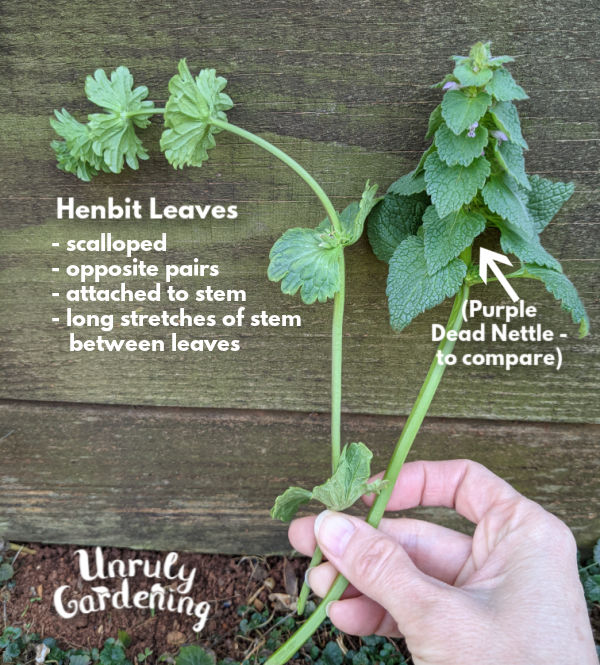
Leaf Details
- rounded scalloped leaves with a wrinkly look
- upper leaves don’t have a leaf stalk (petiole) and they wrap around the stem (are sessile)
- lower leaves can have leaf stalks
- leaves grow in pairs, opposite from each other, with long lengths of stem in between
- leaves have fine hairs on them

What to Do with Henbit
Can you eat henbit? Yes! The stem, leaves, and flower are edible. Young plants are considered more palatable than older ones. Science hasn’t deeply studied the nutritional profile of henbit, but it’s said to be high in antioxidants and fiber.
Henbit is a wild edible that can be eaten raw or cooked. It’s actually quite tasty! Try adding a few chopped pieces to your next salad, or mix with other spring greens and spinach to make smoothies or quiche.
When we pull up piles of henbit (and purple dead nettle) to make space to plant veggies, we give most of it to our chickens and ducks (they love it!), plus dole out a few sprigs for our bunny to enjoy.
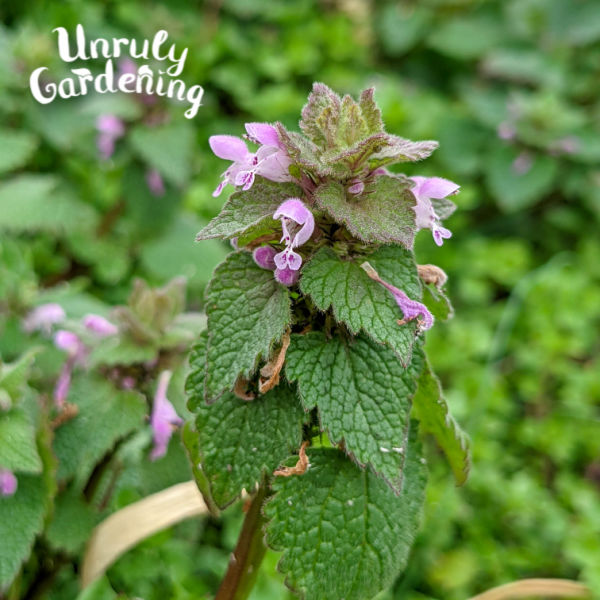
Identifying Purple Dead Nettle
- Latin name: Lamium purpureum
- Flowering season: late winter, early spring
- Other names: Red Deadnettle, Purple Archangel, Purple Deadnettle
- Grows to about 16 to 18″ tall
- Winter annual, reproduces by seed

Flower Details
- flowers are lavender, purplish, or purplish pink
- they are bilateral with lips
- the flowers and flower buds are hairy
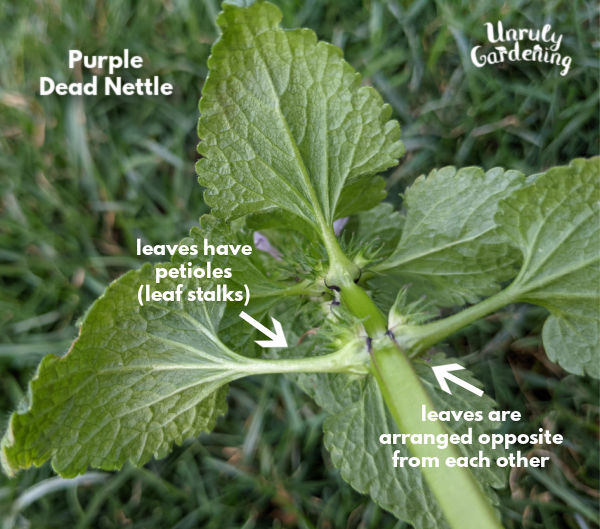
Leaf Details
- triangular or spade shaped leaves
- leaves start out green, but the plants develop purple tops as they mature
- leaves grow in opposite pairs and are all crowded together along the stem
- leaves have hairs on them (but they don’t sting, like stinging nettle does)
Video: Henbit vs Purple Dead Nettle ID Tips & Photos
Here’s a slideshow summarizing the differences between purple dead nettle and henbit weed.(Sometimes an ad plays first, but the video will start right after. The video player won’t show up if you have an adblocker.)
What to Do with Purple Dead Nettle
Purple dead nettle can also be eaten raw, but to be honest – it’s not as tasty to us as other spring greens such as chickweed or henbit. You can include it in pesto, soups, and quiches, in place of, or combined with, spinach and nettle. If you’re pregnant, don’t take purple dead nettle internally.
We mostly use it to make a tincture for seasonal allergies, as a poultice for wounds in the field, and to make infused oil and salves that are useful for first aid or aches & pains, and more! Check out our sister site – The Nerdy Farm Wife – for lots of helpful recipes!
- 9+ Things to Make with Purple Dead Nettle
- Purple Dead Nettle Salve (3 recipes!)
- Purple Dead Nettle Lotion Bars
Our articles are for information and idea-sharing only. While we aim for 100% accuracy, it is solely up to the reader to provide proper identification. Be sure to seek out local foraging classes and plant walks, and invest in mushroom and foraging guides suitable for the area you live in, since some wild foods are poisonous, or may have adverse effect.


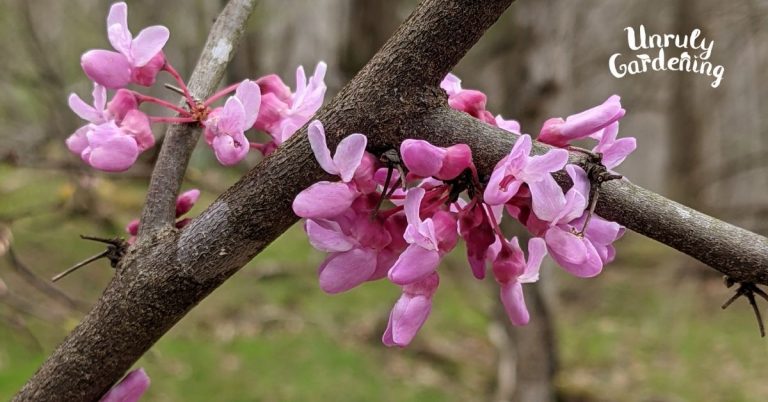

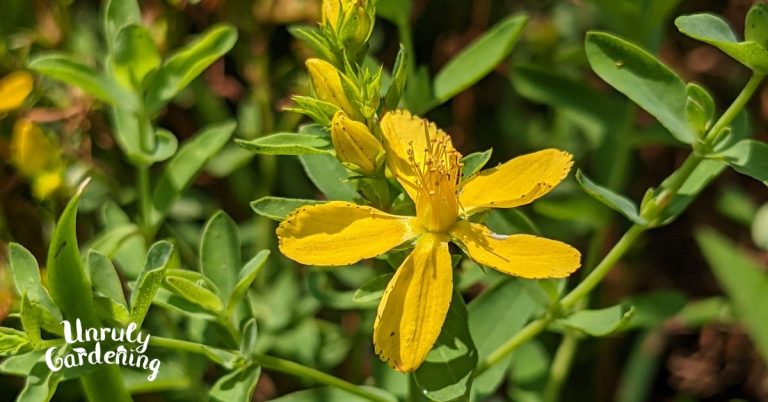
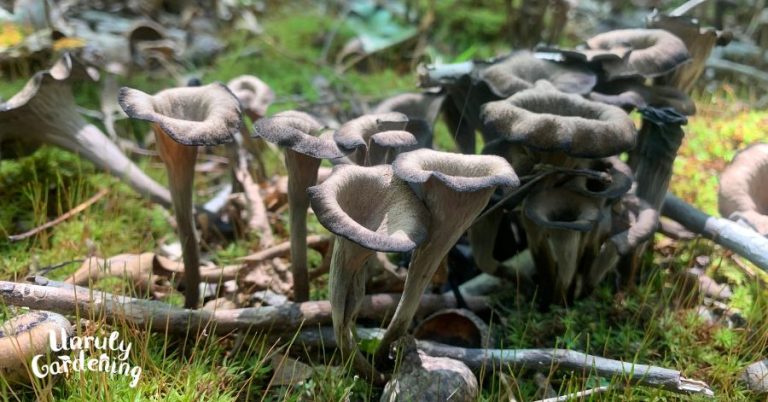
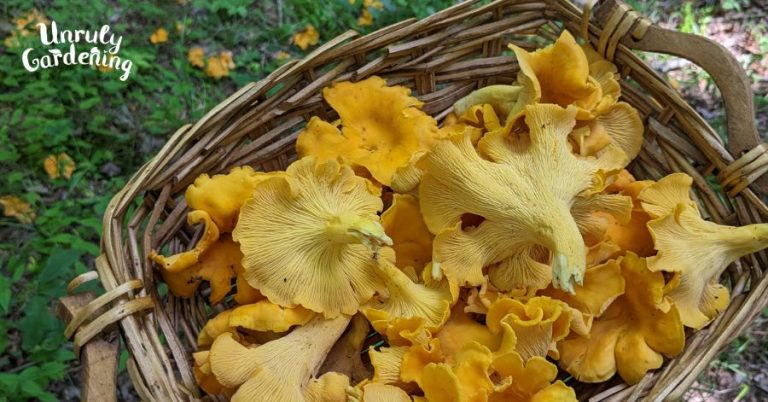
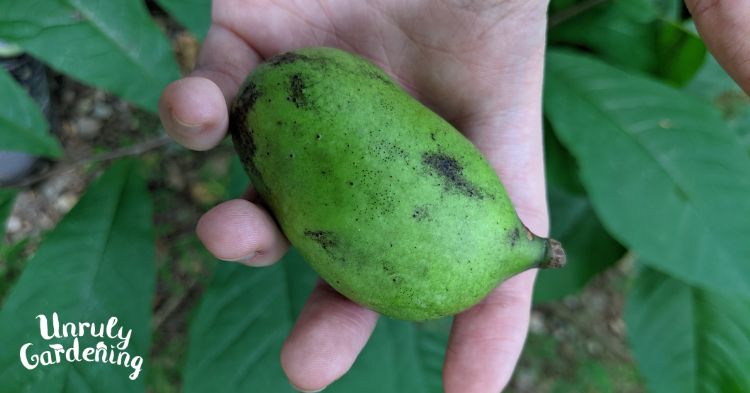
Wow! Thanks a bunch!!
Hi Sharon, We’re so glad you enjoyed the article on henbit & dead nettle!
thank you so much. I love this page and am about to check out the neardyfarmwife. Right now I’m in SoCal, and not much foraging is possible, but being from Indiana I know that the best plants grow rlnlright next to us and the sidewalk and the roads.
thank you for taking the time to pass such important information on to a new generation.
Hi Bobbi, So glad you enjoyed this page & thanks for checking out the nerdy farm wife site too! 🙂
Hi, I have s huge amount of stinging nettles. I know you can eat them after they are cooked. Can they be made into salve and oil? Thank you very much! Donnah-Rae
Hi Donnah-Rae! Yes, you can dry stinging nettles (Urtica dioica), infuse them into oil, and use them in salve recipes.
In this case, they’d make a good first aid salve, for itchy bug bites, minor burns, scrapes & scratches. Stinging nettles are also great to infuse into DIY hair care products!
We’re working on an article now about stinging nettles – stay tuned!
Excellent photography showing the difference between the two plants, as well as well written explanation.
thank you
Yvonne
Hi Yvonne, Thanks so much for the kind words! We’re so glad the info & photos about henbit and purple dead nettle were helpful!
Agreed!!
I am new to identifying weeds in my yard. Particularly to see if they are toxic for my dog.
Hi Debbie! So happy you liked the article too! A great resource book you might like is Herbs for Pets by Gregory L. Tilford and Mary L. Wulff.
You can check the herb/plant you’re interested in using the book, and it will mention if it’s not safe for dogs, cats, etc. It doesn’t list all of the backyard plants, but does cover quite a few! It’s one of my top 5 referenced herb books since I want to make sure plants are safe for all of my animals as well. 🙂
Very informative article. I’ve lived in Oklahoma all my life. I’ve had both growing in my yards over the years. Always thought they were all henbit until now. I’ll be 73 soon and as a young girl I would turn the flower stem upside down and show how the flowers looked like a rabbit. Many children liked the idea of them looking like rabbits. Later years I found out they were named henbit and that they were edible. Still delight in seeing the.
Thank you for a wonderful lesson.
Hi Hughlene, Thanks for sharing your memories! ❤ The rabbit idea is cute! I’ll have to add a photo of that next time I spot a patch of henbit blooming!
Hello, thank you for the information! I have one question thought besides chickens, duck or rabbits eating it and being fine is it poisonous to livestock such as horses, cattle or goats? Thank you again.
Hi Holly, That’s a great question! Our goats have access to big stretches of purple dead nettle & henbit each spring but don’t really seem to favor it, so I haven’t noticed any negative effects.
I don’t feed it to them on purpose, but don’t worry if they have access to it.
We don’t have horses or cattle, so unsure about those. However, the Sustainable Agriculture Research & Education site says:
https://www.sare.org/publications/manage-weeds-on-your-farm/deadnettles/#deadnettles-ecology
“Grazing on henbit can cause mild neurological problems in sheep, cattle and horses, but the condition is rare and reversible. Purple deadnettle has no reported toxic properties for ruminants.”
Thank you very much for this excellent article. The illustrations and video are very clear. I decided to look up both plants in my copy of Mrs Grieve’s A Modern Herbal; she describes them in the section on nettles. The book is freely available online too: https://www.botanical.com/botanical/mgmh/n/nettle03.html#pur and is a fascinating historical document.
I am pleased to say purple deadnettle is growing abundantly in my garden in SW England
Hi Ruth, Thanks for sharing the excellent book link with us!
I’m so happy to hear that you enjoyed the article!
I found and learned about Henbit last year – square stem – but as often as I read about Nettle it alludes me. Are Dead Nettle and Stinging Nettle different plants, or just different names for the same plant? I have found what I have been calling Henbit in my garden boxes already this year! But now I am going to take a second look based on the information you have provided here to determine what I really have. Hopefully, maybe some of both. Thank you so much for this article; it is the first I have read, of so many, that speaks about the similarities and differences of these plants.
Hi Deborah! That’s such a great question, that I wrote up an article about it to answer your query.
They are two different plants.
I think other people also get common stinging nettle (Urtica dioica) and dead nettle (Lamium purpureum) confused, so hopefully it will be helpful! 🙂
Here’s that info on how to tell stinging nettle and dead nettle apart:
https://unrulygardening.com/common-nettle-vs-dead-nettle/